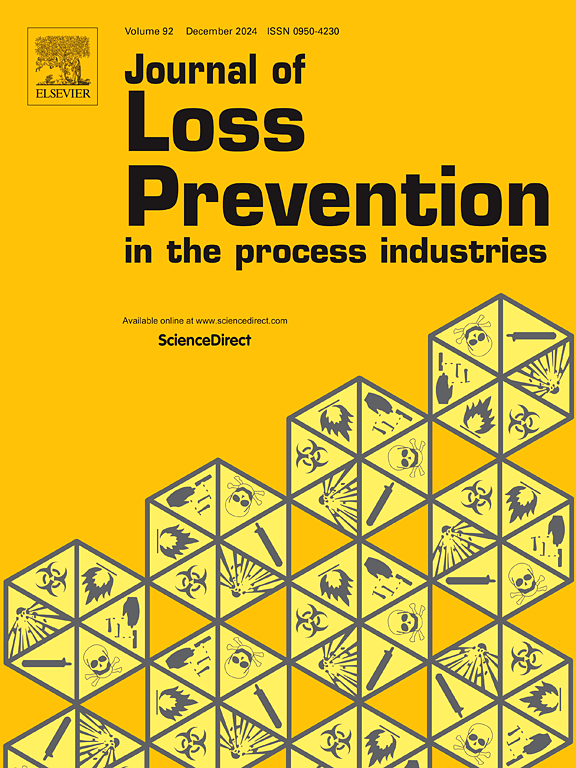Towards the development of a systems-theoretic model for safety assessment of arctic offshore drilling activities
IF 4.2
3区 工程技术
Q2 ENGINEERING, CHEMICAL
Journal of Loss Prevention in The Process Industries
Pub Date : 2025-06-25
DOI:10.1016/j.jlp.2025.105731
引用次数: 0
Abstract
The exploration and development (E&D) of Arctic offshore oil and gas reserves represent a domain with significant potential, yet fraught with formidable challenges and operational risks. The harsh Arctic environment and the complexity of drilling equipment impose many challenges on E&D operations. Addressing these challenges necessitates innovative methodologies capable of detailed analysis of complex drilling tasks and a holistic understanding of risk propagation. This study proposes an integrated framework combining the Systems-Theoretic Accident Model and Processes (STAMP) and Functional Resonance Analysis Method (FRAM) to enhance the safety analysis in Arctic offshore drilling operations. STAMP systematically identifies unsafe control actions (UCAs) within hierarchical control architectures, whereas FRAM captures functional variability and emergent resonance effects. A case study of drilling activities in the Barents Sea illustrates the applicability and highlights critical operational hazards. The integrated framework facilitates macro-level assessment of functional interactions and micro-level control structure analysis, offering actionable safety constraints. The findings underscore the effectiveness of the framework in addressing Arctic-specific operational risks. This research provides a robust analytical tool for safety management in high-risk environments, thereby providing decision-making support for ensuring the safety of arctic offshore drilling activities.
建立北极近海钻井安全评价系统理论模型
北极海上油气勘探与开发(E&;D)是一个具有巨大潜力的领域,但也充满了巨大的挑战和运营风险。恶劣的北极环境和钻井设备的复杂性给勘探开发作业带来了许多挑战。解决这些挑战需要创新的方法,能够详细分析复杂的钻井任务,并全面了解风险传播。本研究提出了一个结合系统理论事故模型和过程(STAMP)和功能共振分析方法(FRAM)的集成框架,以加强北极海上钻井作业的安全分析。STAMP系统地识别分层控制体系结构中的不安全控制行为(UCAs),而FRAM捕获功能变异性和紧急共振效应。巴伦支海钻井活动的一个案例研究说明了该技术的适用性,并强调了关键的操作风险。集成框架有助于宏观层面的功能交互评估和微观层面的控制结构分析,提供可操作的安全约束。调查结果强调了该框架在解决北极特定业务风险方面的有效性。该研究为高风险环境下的安全管理提供了强有力的分析工具,从而为确保北极海上钻井活动的安全提供决策支持。
本文章由计算机程序翻译,如有差异,请以英文原文为准。
求助全文
约1分钟内获得全文
求助全文
来源期刊
CiteScore
7.20
自引率
14.30%
发文量
226
审稿时长
52 days
期刊介绍:
The broad scope of the journal is process safety. Process safety is defined as the prevention and mitigation of process-related injuries and damage arising from process incidents involving fire, explosion and toxic release. Such undesired events occur in the process industries during the use, storage, manufacture, handling, and transportation of highly hazardous chemicals.

 求助内容:
求助内容: 应助结果提醒方式:
应助结果提醒方式:


